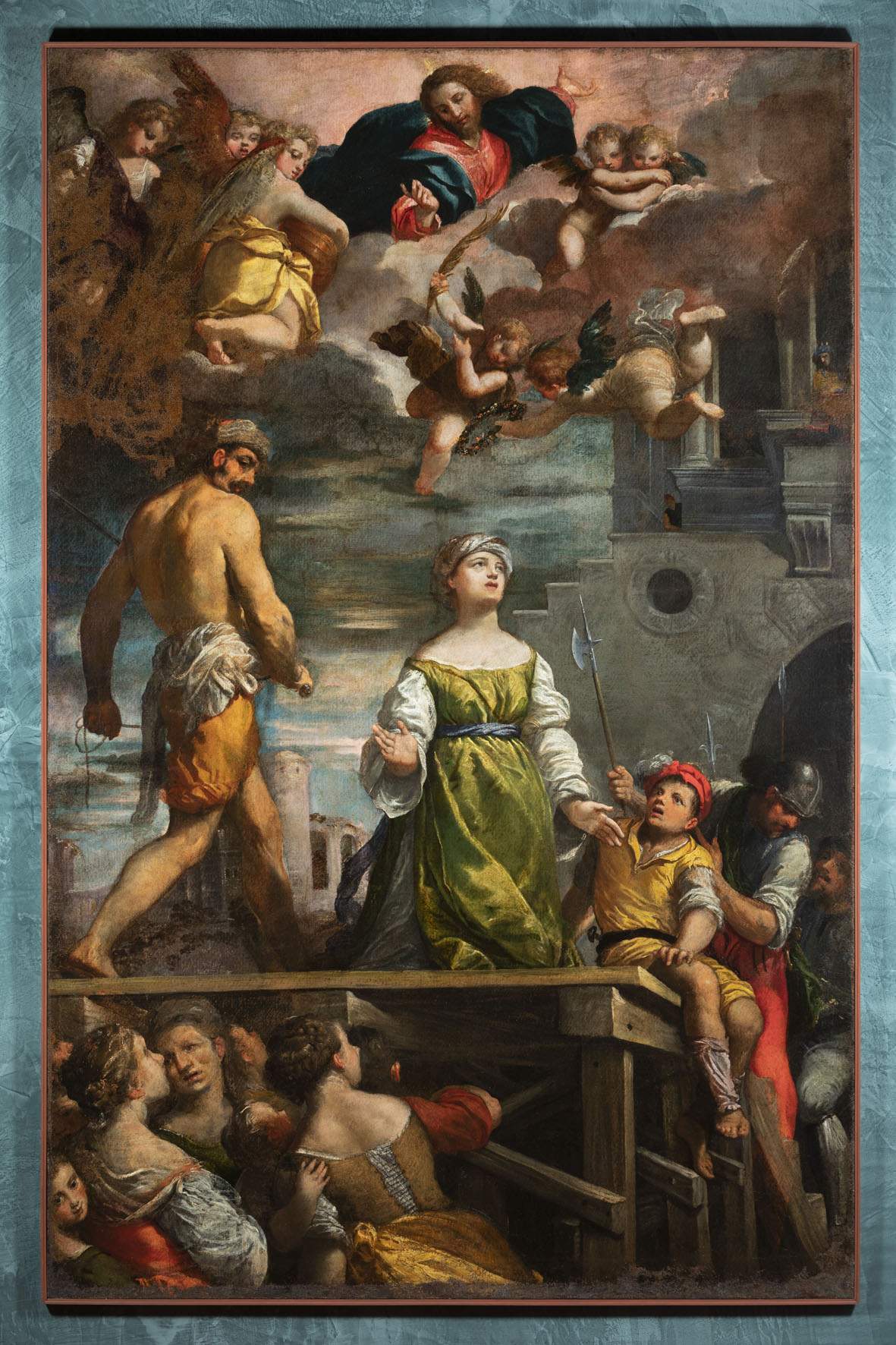From January 26 to December 26, 2019, Ferrara ’s Castello Estense will host the exhibition Painting the Affections. Sacred Painting in Ferrara between the Sixteenth and Eighteenth Centuries, a new chapter in the City of Ferrara’s “Art for Art” project, promoted in collaboration with the Ferrara Arte Foundation, and dedicated to enhancing the city’s historical and artistic heritage made inaccessible after the 2012 earthquake. After the works of De Pisis, Boldini, Previati and Mentessi from the Gallerie d’Arte Moderna, protagonists of the project’s first two exhibitions, the focus now shifts to the period from the 16th to the 18th century. The richly frescoed rooms of the south wing and the Camerini of the Castle will in fact host the picture gallery owned by the ASP, Centro Servizi alla Persona of Ferrara, Masi Torello and Voghiera, deposited at the Museums of Ancient Art.
This is a real artistic capital, almost unknown yet of great historical importance, which the exhibition at the Castle aims to return to the general public. The visiting experience is intended to take on the contours of a journey through time that will range from the waning of Este rule to the Age of Enlightenment. The stages of this itinerary will lead the public into the presence of two important protagonists of the naturalistic revolution of the early 17th century: Ippolito Scarsella known as lo Scarsellino (Ferrara, 1550 or 1551 - 1620) and Carlo Bononi (Ferrara, 1569 - 1632). The suave magnificence of the former and the mournful beauty of the latter characterize the Ferrara of those years, making it one of the most intriguing artistic centers of the time. At the same time, visitors will make the acquaintance of chronologically earlier and parallel personalities such as, for example, Giuseppe Mazzuoli known as Bastarolo, whose chastened mannerism is fundamental in the second half of the 16th century, Gaspare Venturini, a painter very active for dukes and religious patrons, and the enigmatic Giuseppe Caletti, a curious figure of a “cursed artist” working in the first half of the 17th century. The second half of the seventeenth century is characterized by the mitigated figurative universe of Giuseppe Avanzi, a mediating painter who will open the curtain to the eighteenth century where the singular personalities of Giacomo Parolini and Giuseppe Zola will stand out.
The title, Painting the Affections, refers to a double symbolic evocation. The first concerns language: the works that will be exhibited in the Castello move in the wake of the orientations following the Council of Trent, which delegated to art the basic task of mediating between the faithful and religion, between the visible and the invisible, through naturalistic, emotional and familiar forms in which the man of the seventeenth and eighteenth centuries could recognize himself. The second relates to the humanitarian vocation that animated the places from which they were originally placed. Not just any churches, but the altars, chapels and rooms of religious institutes that placed at the center of their work help towards others, whether orphans, destitute, needy or women in distress. A set of experiences animated by leading figures of the Estense court (from Alfonso II to Barbara of Austria to Margherita Gonzaga) but also by a substantial slice of the city’s nobility and bourgeoisie, engaged in charity and solidarity work.
And so it is that the protagonist of this exhibition will also be the city of Ferrara, in an attempt to recompose the connective tissue of a “heraldry of charity” (to use a felicitous definition by Andrea Emiliani) that constituted the most tangible manifestation of that seventeenth- and eighteenth-century pietas animated by empathetic affectivity and social commitment. An activism that led to the adornment of some of the most representative sacred places, now almost all of which have disappeared or changed in appearance or use, such as the women’s conservatories of Santa Barbara and Santa Margherita, or the Opera Pia of General Poverty. A journey through time in search of Ferrara’s modern roots. This is true not only from a historical-artistic point of view, but also from a social point of view: the fact that these works were inherited by the ASP Centro Servizi alla Persona of Ferrara, and that the latter has collaborated and supported the realization of the exhibition project, represents the red thread that connects the humanitarian activity of the ancient charitable institutions, with the current declination of active welfare policies in the city.
The exhibition is curated by Giovanni Sassu in collaboration with Tito Manlio Ceroli and Romeo Pio Cristofori and is organized by Ferrara Art Foundation, Castle Service, Museums of Ancient, Sacred and Historical-Scientific Art of the Municipality of Ferrara, in collaboration with ASP - Azienda Servizi alla Persona, Ferrara, CFR - Consorzio Futuro in Ricerca, CIAS - Centro Ricerche Inquinamento Fisico Chimico Microbiologico Ambienti Alta Sterilità of the University of Ferrara. For information call 0532 299233, email castelloestense@comune.fe.it or visit the Ferrara Estense Castle website.
Image: Ippolito Scarsella (1551-1620), Martyrdom of Santa Margherita (1611; canvas, 246.5 x 156.5 cm; Ferrara, Azienda Servizi alla Persona, inv. DOC51, on deposit at the Musei di Arte Antica)
 |
| Little-known treasures from the sixteenth to eighteenth centuries on display in Ferrara: it's the exhibition Painting the Affections |
Warning: the translation into English of the original Italian article was created using automatic tools. We undertake to review all articles, but we do not guarantee the total absence of inaccuracies in the translation due to the program. You can find the original by clicking on the ITA button. If you find any mistake,please contact us.